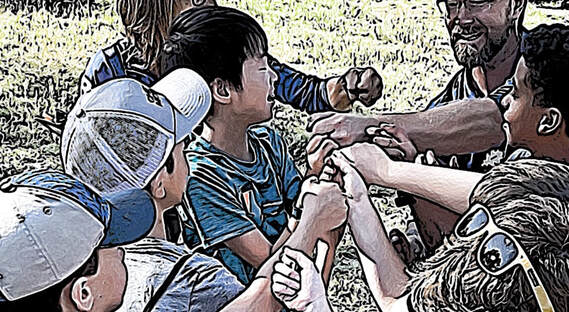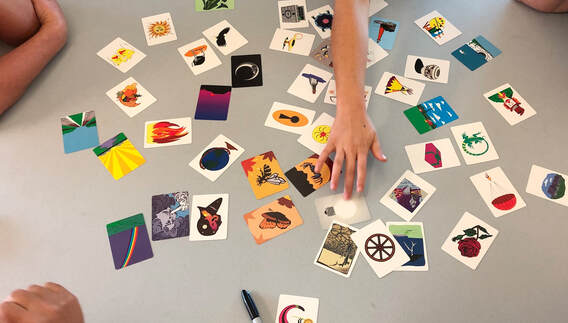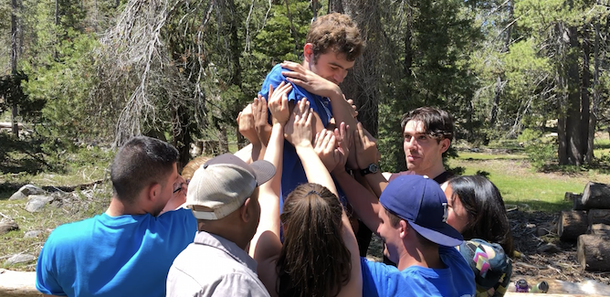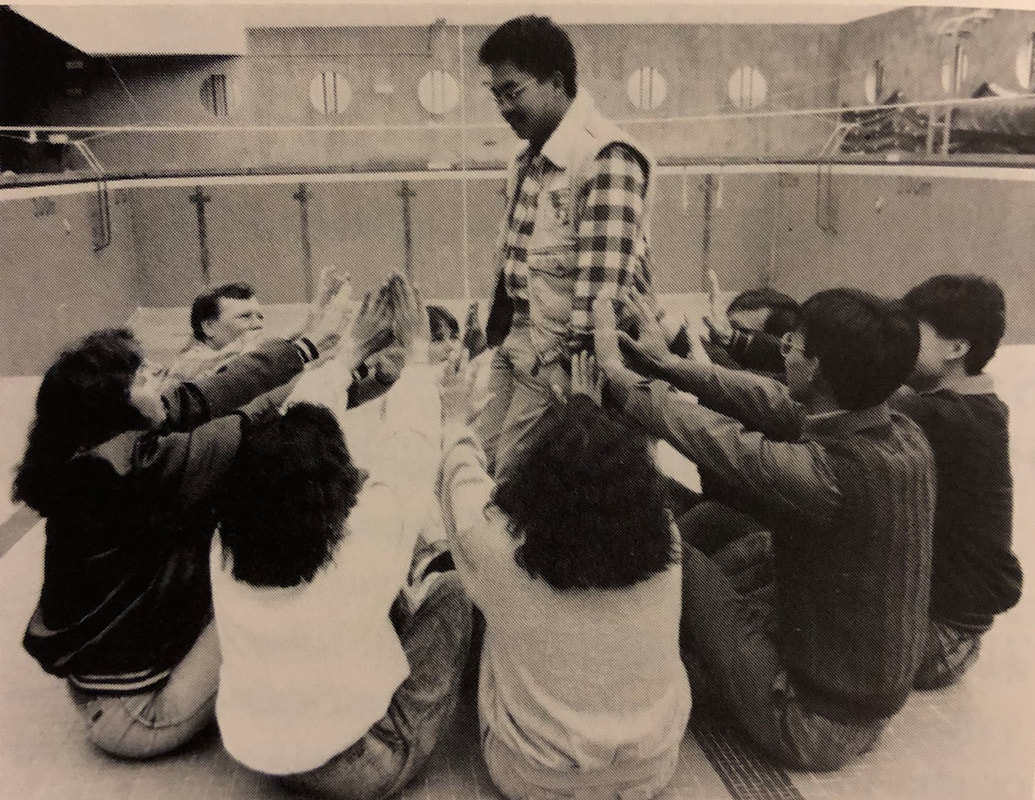I learned this activity from my friend Mike Spiller. He showed us his version of Stationary Greeting while we were all (over 100 of us) sitting in the bleachers of a school gymnasium. I added the 'pivot' connection for flatter playing areas.
To set this one up, gather everyone in your BIG group together in a clump - or, I call it, family style. Have them scooch in nice an close together without touching anyone once they have found a place to stand. (NOTE: I like to warn everyone that we'll be close together for a few minutes, so, "if you need a little extra space, position yourself near the outside of the clump.")
Frontload: Here's how I like to frame Stationary Greeting with just about any group:
"As you can see, my friends, we are close together. In a moment we're going to make some connections with others around us. So, please be mindful of the way you move during the connections. This will be a good time to practice, 'thinking' before 'moving' - be aware of the others around you. Today, during our program together, we will have a lot of opportunities to think before we move!! Please take care of yourself and others so we can all have the best possible time."
Okay. We're ready to connect!
Round 1: "Alright everyone. Here's our first round of connections. Go ahead and have your feet about shoulder width apart. Now plant some roots under your feet into the ground. This is where your feet must stay. For the next 90 seconds, see how many fist bumps you can make with different people around you, one fist bump per person, without moving your feet. Again, it is important to be careful with your movements - be aware of others before you reach out for a fist bump. Do keep track of how many fist bumps you can make because I'll be asking you for your score at the end of the 90 seconds. Ready. Begin.
5, 4, 3, 2, 1, everyone FREEZE! Okay. Raise your hand if you had more than 10 fist bumps with different people. Keep your hands up until I get to your number. How about 15? 20? 21? 22? 23? Nice job everyone. That's a lot of connections. And, thanks so much for being mindful about your movements. Let's see if we can make some more connections."
Round 2: "Before we make more connections, you are free, at this time, to move to a different place in the group if this would be more comfortable for you or you think you might want to connect with more people - you might not be standing in the best place to connect with others. If you want to move to a different spot, be respectful of others and find a place you can share with the people around you. Today there will be opportunities to make choices that will help you out and help out your group. So, please speak up if you need help or if you have choices you want to explore.
Okay. Is everyone where they would like to be? Perfect. In this round, you will have one pivot foot - like in basketball. One foot will stay planted in one spot, but you can spin around on this foot. Once you start the connections, you must keep this same pivot foot - no changing pivots. Okay. Let's see how many fist bump connections we can make, with different people, now that we have a pivot foot. Yes. you can fist bump with the same people as you did in the first round. But, not you should be able to get others you could not reach before. 90 seconds. Ready? GO!
5, 4, 3, 2, 1, everyone FREEZE! Okay. Raise your hand if you had more than 15 fist bumps with different people. Keep your hands up until I get to your number. How about 20? 25? 26? 27? 28? Amazing job everyone. That's a lot of connections. And, thanks again so much for being mindful about your movements - there was a lot more to consider before stepping into the crowd. Let's try one more round."
Round 3: "Okay friends. This round is simply about connecting with others you have not connected with yet!! Standing right where you are, feet shoulder width apart, you'll be looking around the group for others just out of your reach and make eye contact with them - when you make eye contact, give this person a little wave, say their name if you know it, then look for someone else to eye-connect with. No fist bumps during this round and we're only going to play for 60 seconds - so, get in as many connections as you can. Ready, GO!
5, 4, 3, 2, 1 Freeze! How many more connections did you get? 10? 15? 20? 25? 26? 27? Fabulous. Please remember, let's keep connecting with others in the group today - especially with the people you don't know yet. The more connections we can make, and keep, the stronger we can be together. And, don't forget. Let's remember to think and then move!! Take care of yourself and others. Make it a good day!"
Have FUN out there my friends!! Keep me posted.
Chris Cavert, Ed.D.










 RSS Feed
RSS Feed